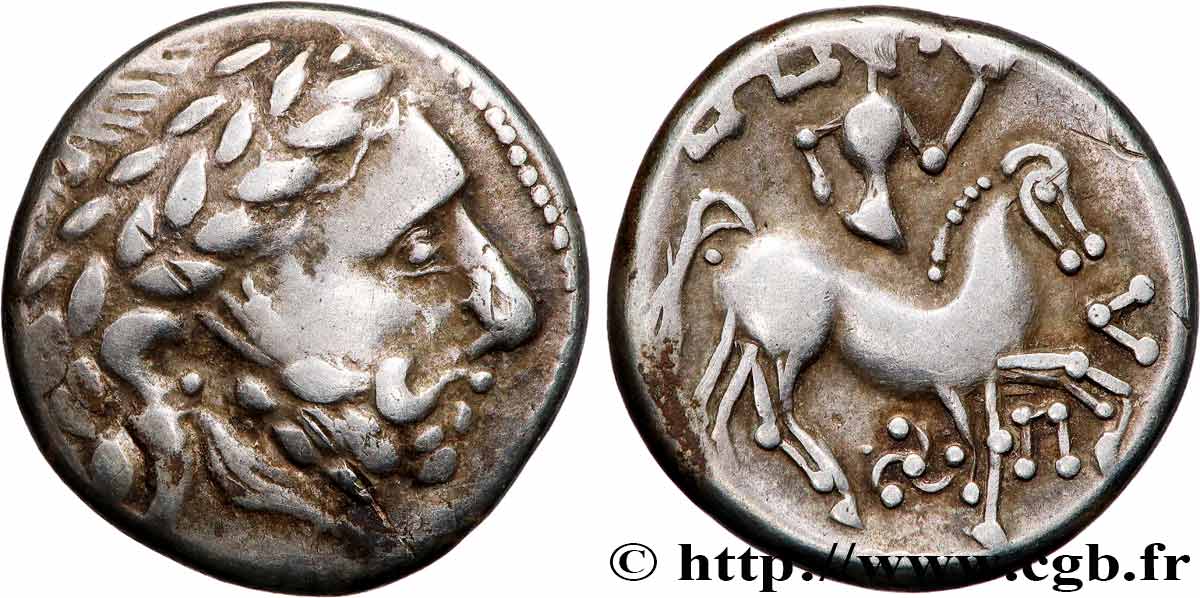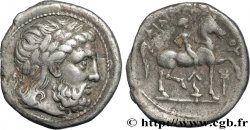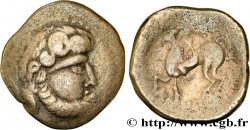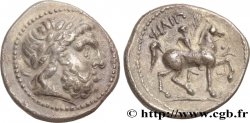bga_810495 - DANUBIAN CELTS - IMITATIONS OF THE TETRADRACHMS OF PHILIP II AND HIS SUCCESSORS Tétradrachme “au monogramme d’Audoléon” et au triskèle
Quantity
Add to your cart

Type : Tétradrachme “au monogramme d’Audoléon” et au triskèle
Date: c. IIe-Ier siècles AC.
Metal : silver
Diameter : 23,5 mm
Orientation dies : 7 h.
Weight : 12,42 g.
Rarity : R2
Coments on the condition:
Monnaie idéalement centrée. Très beau portrait ainsi qu’un revers bien venu à la frappe. Patine grise
Catalogue references :
Obverse
Obverse legend : ANÉPIGRAPHE.
Obverse description : Tête barbare, laurée et barbue de Zeus à droite.
Reverse
Reverse legend : ANÉPIGRAPHE.
Reverse description : Cavalier très stylisé, tenant un bâton, sur un cheval réaliste avec une queue très développée ; une volute devant le poitrail, un pi bouletée sous la jambe gauche du cheval et un triskèle sous le ventre ; derrière le cavalier, une arabesque.
Commentary
Sur ce type, la couronne de laurier est très importante d'où l'appellation de "Verkehrten Lorbeerkranz".








 Report a mistake
Report a mistake Print the page
Print the page Share my selection
Share my selection Ask a question
Ask a question Consign / sell
Consign / sell
 Full data
Full data









